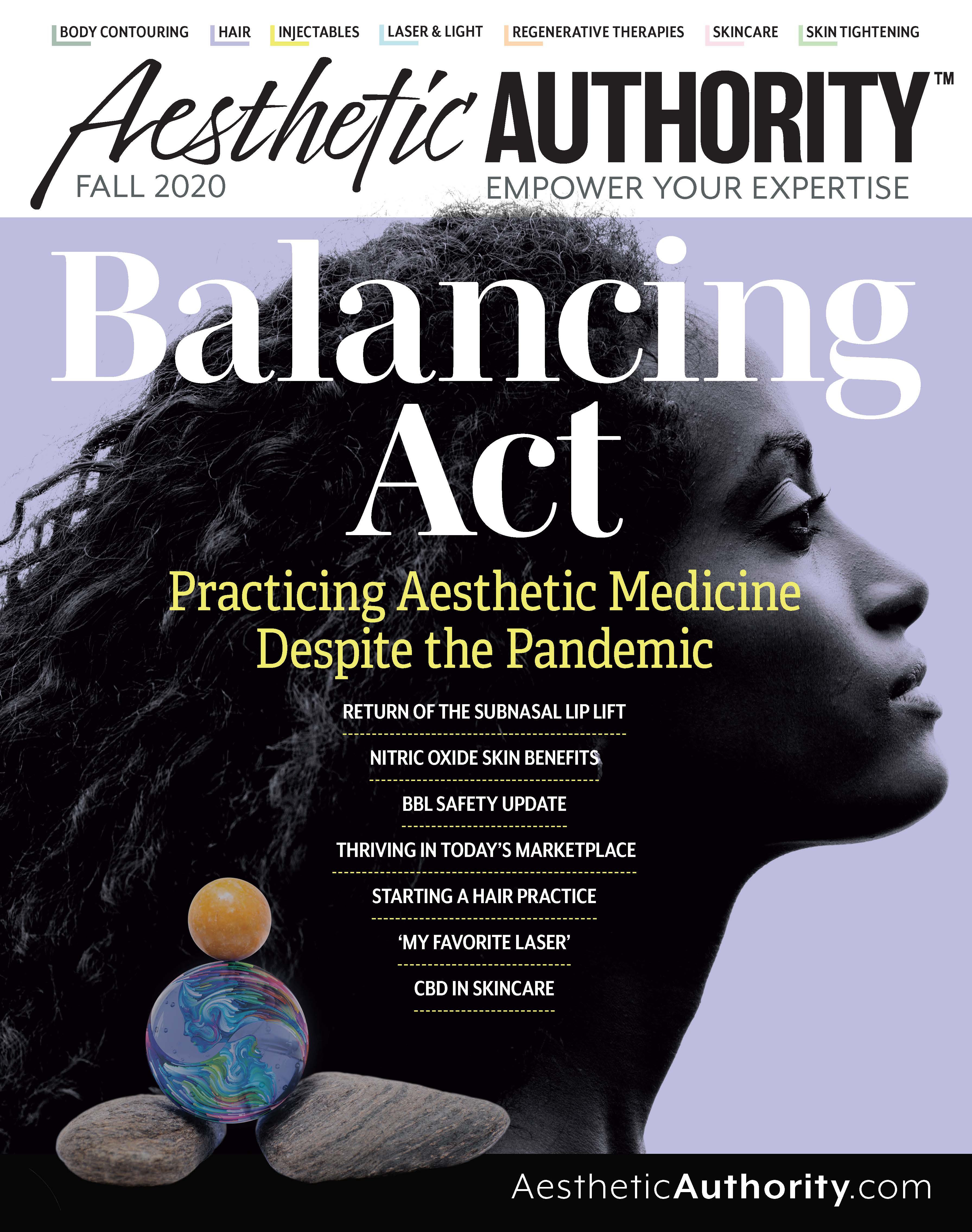- Case-Based Roundtable
- General Dermatology
- Eczema
- Chronic Hand Eczema
- Alopecia
- Aesthetics
- Vitiligo
- COVID-19
- Actinic Keratosis
- Precision Medicine and Biologics
- Rare Disease
- Wound Care
- Rosacea
- Psoriasis
- Psoriatic Arthritis
- Atopic Dermatitis
- Melasma
- NP and PA
- Skin Cancer
- Hidradenitis Suppurativa
- Drug Watch
- Pigmentary Disorders
- Acne
- Pediatric Dermatology
- Practice Management
- Prurigo Nodularis
- Buy-and-Bill
Publication
Article
Aesthetic Authority
New Player in Cellular Medicine Shows Skin Benefits
Author(s):
Anti-aging and acne studies show topical nitric oxide stimulates fibroblast proliferation and migration, promotes angiogenesis, and modulates inflammation and immune response.
The past five to ten years have shown steady interest and growth in regenerative therapies and cellular medicine. According to plastic surgeon Greg Chernoff, MD, nitric oxide, an important signaling molecule and gas in the body, is not only necessary for optimal cellular health, it’s also key to tissue regeneration.
“We know that nitric oxide signals blood vessels to relax. It promotes dilation and circulation in the body. In fact, in 1998, the Nobel Prize was won by three scientists for their contribution in discovering the valuable benefits of nitric oxide in the body,” says Dr. Chernoff. “For the last five years, we've been very fortunate to be working with Dr. Nathan Bryan, who is a PhD at the University of Texas, and he was responsible for the development of the first oral replacement form of nitric oxide.”
From Oral to Topical
Nitric oxide, a very unstable, short-lived gas in the body, is produced by the endothelial cells in blood vessels and in oral mucosa and has a broad impact on health, according to Dr. Chernoff.
Given the internal benefits of nitric oxide in the body, he conducted several clinical studies to examine the effects of topical nitric oxide on the skin for aging, acne, wound healing, and scar therapy. Dr. Chernoff found that topical nitric oxide stimulates fibroblast proliferation and migration, promotes angiogenesis, and modulates inflammation and immune response.
“As an ancillary benefit, we also found that it increases follicles in the growth phase and helps to regenerate the dermal papilla cell in the hair follicle,” he tells Aesthetic Authority.
In Dr. Chernoff’s skin aging research and subsequent publication, “The Utilization of a Topical Nitric Oxide Generating Serum in the Aging Skin Population: A Pilot Study,”1 he cites studies that show that nitric oxide plays a role in:
- Proliferating and differentiating epidermal cells
- Regulating immune and inflammatory responses
- Controlling allergic manifestations, antigen presentation, and microbicidal activity
In the preliminary efficacy and proof of concept trial, 25 patients (20 women, 5 men) ranging in age from 32 to 81, applied the nitric oxide serum post cleansing both AM and PM. Patients were evaluated every 4 weeks for 12 weeks. Measured features included wrinkles, pores, evenness, oiliness, pigment, and vasculature using Linear Analog Scales. Results were quantified using Quantificare’s Life VIZ App for 3D analysis and compared to their database of “normal” skin at various stages of aging. Overall satisfaction was measured with Linear Analog scores.
The study showed that measured features improved at each follow-up (4, 8 and 12 weeks). At 12 weeks, wrinkles, pore size, skin tone, texture, pigment, oiliness, and erythema were 87%, 65%, 85%, 88%, 75%, 83%, and 51% improved, respectively, compared to baseline. At the final 12-week follow up, most patients (84%) were “Extremely Happy” with their results and no patient was “Unhappy.”
In terms of acne, Dr. Chernoff’s research showed that the serum also benefits skin with active acne and acne scarring.
“Its anti-inflammatory effect is tremendous at reducing erythema in these patients,” he says.
The study included 30 patients, 10 men and 20 women, of Caucasian, Asian, African American, Hispanic, Mediterranean and Indian decent.
Patients applied the nitric oxide serum twice daily after cleansing. Standardized photographs were taken at baseline and every 4 weeks thereafter for 16 weeks. Pustule and comedone counts were recorded at each follow up. Results showed a reduction in active pustules and comedones and improvement in the appearance of mild to moderate acne scars.
Notably, according to Dr. Chernoff, it’s not uncommon for acne sufferers to have low self-esteem.
“We utilized Linear Analog Scales in these patients and found that it had a tremendous improvement, and led to an improvement in their own sense of self-esteem as well,” he says.
Furthermore, because nitric oxide modulates fibroblast activity patients who continued to use the product for the next 12 to 18 months had improvement in acne scarring.






